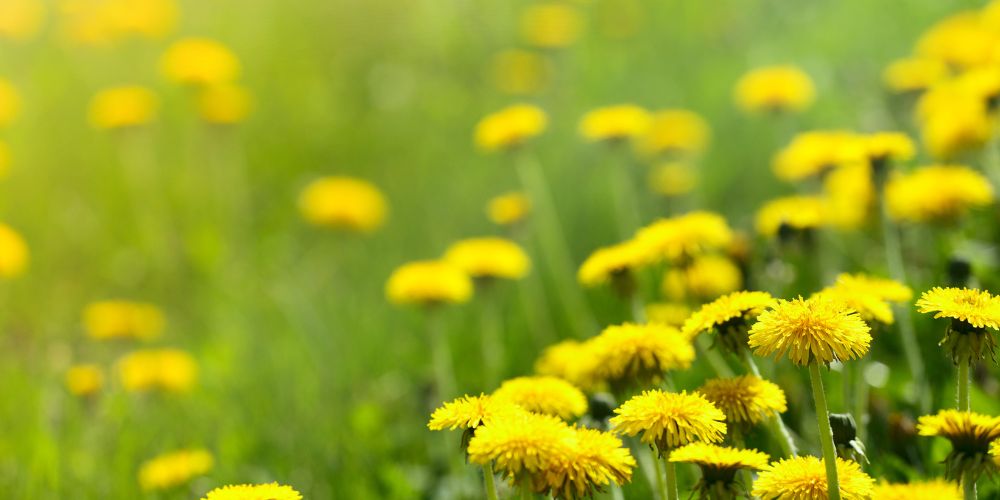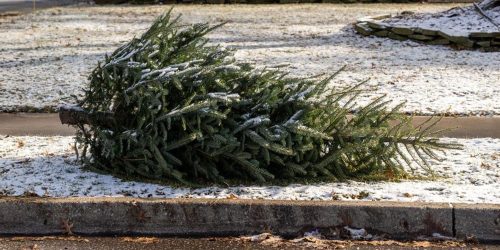No Mow May: A well-meaning initiative with room for improvement

No Mow May, the idea of letting your lawn grow wild for a month to aid pollinators, has become a popular spring tradition. The movement was started by citizen scientists in the UK back in 2019 and quickly spread worldwide.
But while the sentiment is admirable, it might not be the best solution for our buzzing friends. Here’s why …
1. Dandelions are not native to Canada
The main flowers that grow during No Mow May are dandelions. But dandelions are not native to Canada (or North America for that matter). They travelled here with European settlers in the mid-17th century.
While dandelions can be used as a food source for pollinators, they’re not the ideal option. This is especially true for our native species.
Native pollinators need native plant species to thrive. This includes wild strawberries, spotted geranium, red columbine, marsh marigold and many more.
Beat FOMO by being in the know!
2. They aren’t that great for non-native pollinators either
Research shows that even non-native pollinators, such as honey bees (also came from Europe in the 1600s) can’t live on dandelion pollen alone. This weedy plant is a better source of pollen for them than native bees, but it’s missing important amino acids.
So while it’s readily available and a good food source when other plants are scarce, it isn’t a perfect solution non-native species either.
3. It’s a short-term buffet, but a long-term struggle
May's blooms are a fleeting feast. By June, those early-blooming dandelions and clover are replaced by taller grasses, casting shade and choking out future flower growth. This leaves pollinators with a one-month window of plenty followed by a season of struggle.
Not to mention, all blooms are not created equal. If wildflowers do pop up in your lawn, there’s no guarantee that it’s a pollinator magnet. Cutting out mowing gives room for fast spreaders, like crabgrass and creeping charlie, to take over. And these plants offer little to no nutritional value.
4. It’s a misdirect
Once pollinators find a source of food, they return to it over and over again. They’ll even tell their friends and bring them along for a feast.
So while providing lots of dandelions in May is all well and good, it can leave bees, butterflies and other insects on the hunt for a new source once everyone starts mowing in may. It also means that June lacks that shelter and safety they have come to enjoy from their go to food sources. This makes it easier for predators to find them.
5. Habitat disruption
Frequent mowing can disrupt nesting and overwintering sites for some pollinators. However, a complete halt can also be detrimental. Leaving a thick layer of thatch from unmanaged growth can smother young seedlings and prevent new wildflowers from establishing themselves.
6. You could attract more than just pollinators
Long grass isn’t just a haven for pollinators. Rodents, snakes, ticks and other less desirable creatures will make themselves at home in unmown lawn. And that could lead to even more problems down the road. It could also attract invasive plant species and fungal growth.
Rabbits also like to make their nests near tall grasses where bunnies will be safely hidden. While having a bunny nest in your yard may be a pleasant thought, it will be less than ideal for the rabbits once you begin mowing again in June.
7. You could kill your grass (and mower)
Not only is long grass tough on your mower, allowing it to go to seed can kill it. That is because many common grasses spread more efficiently through roots, rhizomes and stolens. Once the grass seeds, the energy used to spread this way is re-distributed to develop the seeds. The result is wasted nutrients and thinning lawns.
If you do participate in No Mow May, remember to keep an eye on your grass and cut off any seed heads that appear.
Once you do start mowing again, do it gradually. Otherwise, you could shock the grass by taking off too much. (This also lets pollinators and other creatures no that they should probably move on.)
There are better solutions than No Mow May
All this doesn’t mean dandelions are completely useless or that we should start ripping out and spraying our weeds. But in many cases, dandelions simply fill the gap when nothing else is readily available.
If you’re looking for a long-term solutions that will make a true impact, there are better ways to help this May:
- Design your property with intention. If you don’t like mowing the grass, look for a substitute that is easier to care for and better for the environment.
- Mow strategically and aim for a happy medium. Raise your mower height and mow less frequently throughout spring and summer. This allows some blooms to flourish while keeping the grass manageable.
- Replace all or a part of your lawn with a wildflower garden with plants that are beneficial to pollinators.
- Focus on planting native plants that have adapted to our region. These provide the perfect nectar and pollen for native pollinator species, who better thrive in our climate.
- Don't settle for a monoculture of wildflowers! Plant a variety of species that bloom throughout the growing season, offering a continuous buffet for pollinators.
- Think beyond flowers. While flowers are crucial, consider incorporating plants with berry-producing shrubs or trees. These provide additional food sources for pollinators and other wildlife.
- Pollinators need safe places to nest and raise young. Leave some dead snags and hollow stems standing in your garden.
- Keep beneficial plants together or create a corridor so that pollinators can travel along your garden. Don’t space the plants out too far.
- A shallow dish filled with clean water is a welcome sight for thirsty pollinators, especially during hot summer months. Place rocks in the dish to provide perching spots for the pollinators to avoid drowning.
- Postpone your fall clean up until spring so that pollinators can hibernate and lay eggs in the leaves. Once the temperature has stayed above 10°C for a week, you can start raking.
- Talk to your neighbors about creating a pollinator-friendly neighborhood. Share resources and encourage them to adopt similar practices in their own yards.
- Help with community gardens or pollinator protection programs in your area. These organizations often promote pollinator-friendly practices and offer educational workshops.
By incorporating these strategies, you can create a haven for pollinators in your own backyard. Remember, a healthy pollinator population doesn't just benefit your garden ... it benefits the entire ecosystem.
Let's work together to create a world where our yards buzz with life!
Beat FOMO by being in the know!
Sign up for our newsletter today and never miss a beat.





